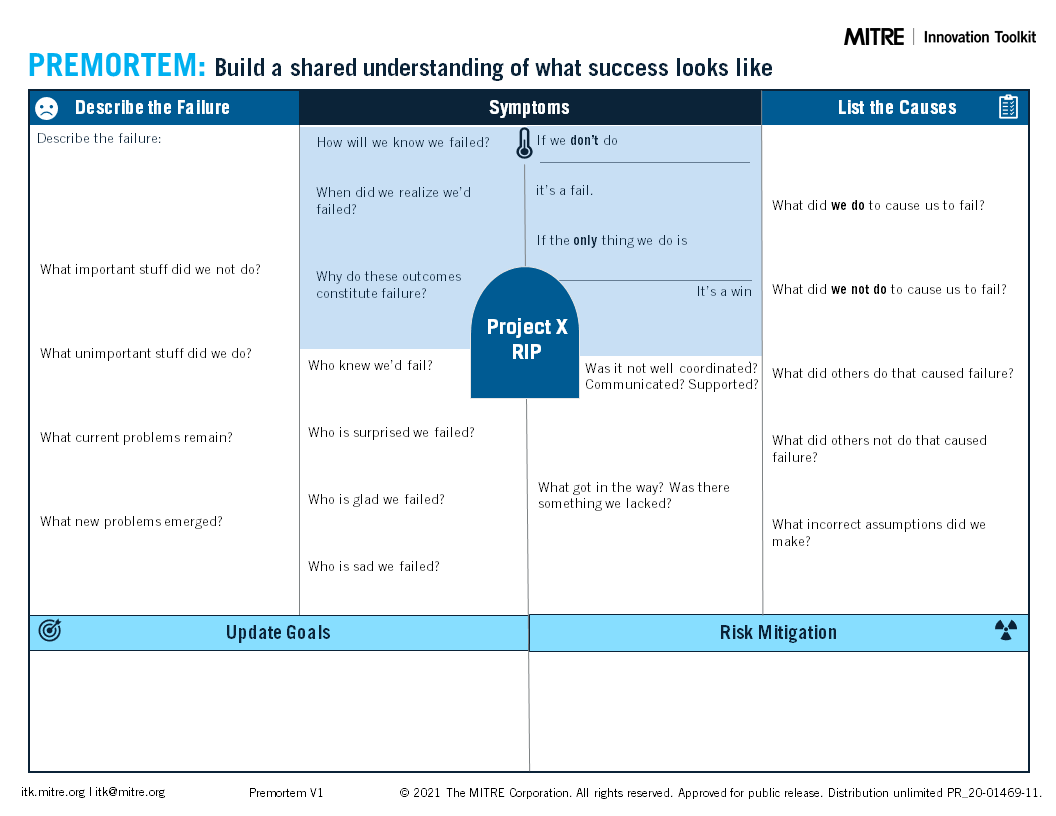PREMORTEM |
 |
What is it
Frame and explore your problem by imagining a future scenario in which the proposed activity fails to achieve its objective.
Why use it
- Clarify what success looks like.
- Uncover hidden assumptions about activities, outcomes, success, and failure.
- Mitigate risks by identifying potential causes of failure.
- Give your team insight into priorities and success criteria
When to use it
When the definition of success is being determined or assessed.
Level
Intermediate
Outcome
Define
Group Size
6+ people
Suggested Time
60+ minutes
Premortem Worksheet

How to do it
STEP 1
Assemble the project team, and give each member a copy of the Premortem Canvas.
Invite everyone to imagine it is two years in the future. Your current project, activity, or initiative has utterly failed. Spend a few minutes writing down answers to the questions in the canvas, then discuss answers with the larger group. Describe the failure. Using vivid detail, describe what it would look like if your project failed completely. Focus on outcomes and attributes, not behaviors or causes.
Don’t hold back or self-edit. Use extreme language and explore the worst-case scenarios. It is important for the facilitator to adopt a curious, open posture and create a “high-trust” environment where each participant is free to share and contribute.
STEP 2
List the causes. Assemble a list of potential causes for the failure. Consider a wide range, including action, inaction, assumptions, priorities, distractions, people, organizations, and processes. Include anything that might be a contributing factor.
STEP 3
Update goals and risks. Compare the failure description with the team’s current definition of success (goals, objectives, etc.) and the team’s current action plans. Discuss whether accomplishing the team’s goals and activities would prevent the future failure scenarios. Adjust goal statements as needed.
STEP 4
Examine the list of causes and identify the most likely failure drivers. Discuss which causes are avoidable and whether the team is taking appropriate steps to mitigate or prevent them from occurring.
Benefits
Often produces profound insights & unexpected moments of honesty.
Challenges
Works best with a playful spirit and a willingness to imagine a worst case scenario, which some participants find difficult.
Combine With
- Problem Framing
- Mission & Vision Canvas
- Stakeholder tools (Stakeholder Map & Matrix, Stakeholder Identification Canvas) to go deeper into motives (who thought we’d fail? Etc)
